Your Gratuity Payout: Calculating & Taxing Your Service Benefit in India (2025)
This blog post offers a detailed look at gratuity in India for 2025. It defines gratuity and outlines the different situations in which it is payable, including superannuation, resignation, death, or disablement. The post explains the eligibility criteria, highlighting the five-year continuous service rule and its main exceptions. It also provides clear formulas and examples for calculating gratuity for both employers covered and not covered by the Payment of Gratuity Act, 1972. A significant portion covers the tax implications for 2025 under Section 10(10) of the Income Tax Act. This section differentiates between government and non-government employees, explains the 20 Lakh exemption limit, and addresses the effect of the new tax regime (Section 115BAC) on gratuity exemptions. The article concludes with key takeaways for better financial planning.
.jpg )
Gratuity is a payment an employer makes to an employee to acknowledge their long service. It plays an important role in an employee’s retirement benefits in India and is mainly regulated by the Payment of Gratuity Act of 1972. As we approach 2025, it’s important to grasp the latest rules, eligibility criteria, how it’s calculated, and the tax consequences.
What is Gratuity?
Gratuity is a one-time payment an employer gives to an employee as a sign of appreciation for their work. It is payable upon:
- Superannuation (Retirement): When the employee reaches retirement age.
- Resignation: After finishing a set period of continuous service.
- Death or Disablement: In these cases, the period of service requirement is often waived, and the gratuity is paid to the nominee or legal heir.
- Voluntary Retirement Scheme (VRS), termination, or layoff due to retrenchment.
Eligibility Criteria for Gratuity
To qualify for gratuity, an employee usually needs to meet these conditions:
- Continuous Service: Generally, the employee must complete at least five years of continuous service with the same employer.
- Important Exception: The five-year requirement is waived for cases involving the employee's death or disablement. In these situations, gratuity is payable regardless of how long the employee worked.
What is meant by "continuous service"?
For a year of continuous service, an employee must have worked for:
- At least 240 days in an establishment (not working underground).
- At least 190 days in mines or similar areas.
Interruptions due to strikes, lockouts, accidents, leave, layoff, or absence without leave (except when the employer terminates service) generally count as part of continuous service.
Employer Coverage:
The Payment of Gratuity Act of 1972 applies to:
- Factories, mines, oilfields, plantations, ports, railways, motor transport undertakings.
- Shops or other establishments with 10 or more employees on any day during the last 12 months.
Once an organization comes under the Act, it remains covered even if the number of employees drops below 10.
How to Calculate Gratuity
The calculation of gratuity depends on whether the employer is covered by the Payment of Gratuity Act, 1972. The “last drawn salary” for calculating gratuity usually includes basic salary and dearness allowance (DA), while components like HRA and medical allowances are often excluded.
1. For Employers Covered Under the Payment of Gratuity Act:
The formula for calculating gratuity is:
Gratuity = Last Drawn Salary × 15 × Number of Years of Service / 26
Where:
- Last Drawn Salary: This refers to the last basic salary plus dearness allowance.
- 15: Represents 15 days' wages.
- Number of Years of Service: This includes total completed years of service. If the service in the last year is six months or more, it rounds up to the next full year. For instance, 10 years and 7 months of service counts as 11 years, while 10 years and 5 months counts as 10 years.
- 26: Represents the working days in a month (excluding four Sundays).
Example:
If an employee’s last drawn salary (Basic + DA) is ₹60,000 per month and they have completed 15 years and 8 months of service:
Number of Years of Service (rounded up) = 16 years
Gratuity = (₹60,000 × 15 × 16) / 26
Gratuity = ₹5,53,846.15 (approx.)
2. For Employers Not Covered Under the Payment of Gratuity Act:
Although not required by law, many employers outside of the Act still pay gratuity as a goodwill gesture or according to their employment contracts. Calculations are usually based on half a month’s salary for each completed year of service.
The formula used is:
Gratuity = Last Drawn Salary × 15 × Number of Years of Service / 30
Where:
- Last Drawn Salary: This typically includes Basic Salary, Dearness Allowance, and sometimes commission.
- 15: Represents half a month’s wages.
- Number of Years of Service: Only completed years of service count. No rounding up for periods over six months.
- 30: Represents the total number of days in a month.
Example:
If an employee’s last drawn salary (Basic + DA) is ₹60,000 per month and they have completed 15 years and 8 months of service:
Number of Years of Service (only completed years) = 15 years
Gratuity = (₹60,000 × 15 × 15) / 30
Gratuity = ₹4,50,000
Tax Eligibility Criteria and Exemptions (2025)
The tax treatment of gratuity in India falls under Section 10(10) of the Income Tax Act of 1961. There have been updates to exemption limits, making it crucial to understand them for 2025.
1. Government Employees (Central, State, Local Authority, Defence):
Gratuity received by government employees on retirement, superannuation, or termination is fully exempt from income tax, regardless of the amount.
2. Non-Government Employees Covered Under the Payment of Gratuity Act, 1972:
For these employees, the least of these three amounts is exempt from tax:
- Actual Gratuity Received.
- ₹20 Lakhs: This is the maximum limit set by the Government (increased from ₹10 Lakhs).
- Gratuity calculated as per the formula: (15 × Last drawn salary × Number of completed years of service) / 26.
Example:
If an employee covered under the Act receives a gratuity of ₹18,00,000 with a last drawn salary (Basic + DA) of ₹80,000 and has completed 20 years of service (rounded up):
Gratuity as per formula = (₹80,000 × 15 × 20) / 26 = ₹9,23,076.92
The least of the three will be exempt:
- Actual Gratuity Received: ₹18,00,000
- Maximum Limit: ₹20,00,000
- Calculated Gratuity: ₹9,23,076.92
In this case, the exempt amount would be ₹9,23,076.92. The remaining amount (₹18,00,000 − ₹9,23,076.92 = ₹8,76,923.08) would be taxable.
3. Non-Government Employees NOT Covered Under the Payment of Gratuity Act:
For these employees, the least of the following three amounts is exempt from tax:
- Actual Gratuity Received.
- ₹20 Lakhs: The maximum limit set by the Government (increased from ₹10 Lakhs).
- Gratuity calculated as per the formula: (½ × Average salary of the last 10 months × Number of completed years of service). Here, "average salary" refers to the average of basic salary and dearness allowance for the 10 months right before the month the employee leaves service.
Example:
If an employee not covered under the Act receives a gratuity of ₹15,00,000, with an average salary for the last 10 months of ₹75,000 and 18 years of service:
Gratuity as per formula = (½ × ₹75,000 × 18) = ₹6,75,000
The least of the three will be exempt:
- Actual Gratuity Received: ₹15,00,000
- Maximum Limit: ₹20,00,000
- Calculated Gratuity: ₹6,75,000
In this case, the exempt amount would be ₹6,75,000. The remaining amount (₹15,00,000 − ₹6,75,000 = ₹8,25,000) would be taxable.
Key Points on Gratuity Taxation for 2025:
- Cumulative Limit: The ₹20 Lakh exemption limit for non-government employees (whether covered by the Act or not) is a cumulative limit for all employers throughout an individual’s career. If you receive gratuity multiple times, the total tax-free amount can’t exceed ₹20 Lakhs.
- New Tax Regime (FY 2024-25 onward): The Central Board of Direct Taxes (CBDT) has clarified that individuals choosing the default new tax regime (Section 115BAC(1A)) will have a gratuity exemption limit of ₹5 Lakhs. The full ₹20 Lakh exemption is only available if you opt for the old tax regime or the "opt-in" new regime under Section 115BAC(6) (for those with business or professional income). This is an important change to keep in mind.
- Gratuity in Case of Death: If gratuity is paid to a nominee or legal heir after the employee's death, it falls under "Income from Other Sources." However, exemptions may still apply up to the specified government limit.
Conclusion
Gratuity is a key financial support for employees, especially at the end of their careers. Knowing the details of eligibility, calculation methods, and tax implications for 2025 is vital for both employees and employers in India. With updated exemption limits and details related to the new tax regime, proactive financial planning is essential to maximize the benefits of this important retirement fund. Always consider consulting a tax advisor for advice tailored to your specific situation.
FILING YOUR INCOME TAX RETURN F.Y 2024-25 (A.Y. 2025-2026) WITH MYITRONLINE
The income tax filing deadline is right around the corner. If you haven’t filed yet, do it today with Myitronline! Avoid last minute rush and file your tax return today on MYITRONLINE in Just 5 mins.(www.myitronline.com)
If you are looking for eCA assistance to file your income tax return/ GST, you can opt for MYITRONLINE eCA assisted plan starting
Upload Salary Individual Form-16
If you have any questions with filing your tax return, please reply to this mail. info@myitronline.com OR call 9971055886,8130309886.
Note-All the aforementioned information in the article is taken from authentic resources and has been published after moderation. Any change in the information other than fact must be believed as a human error. For queries mail us at marketing@myitronline.com
Krishna Gopal Varshney
An editor at apnokacaKrishna Gopal Varshney, Founder & CEO of Myitronline Global Services Private Limited at Delhi. A dedicated and tireless Expert Service Provider for the clients seeking tax filing assistance and all other essential requirements associated with Business/Professional establishment. Connect to us and let us give the Best Support to make you a Success. Visit our website for latest Business News and IT Updates.
Leave a reply
Your email address will not be published. Required fields are marked *Share this article
Krishna Gopal Varshney, Founder & CEO of Myitronline Global Services Private Limited at Delhi. A dedicated and tireless Expert Service Provider for the clients seeking tax filing assistance and all other essential requirements associated with Business/Professional establishment. Connect to us and let us give the Best Support to make you a Success. Visit our website for latest Business News and IT Updates.
View articles









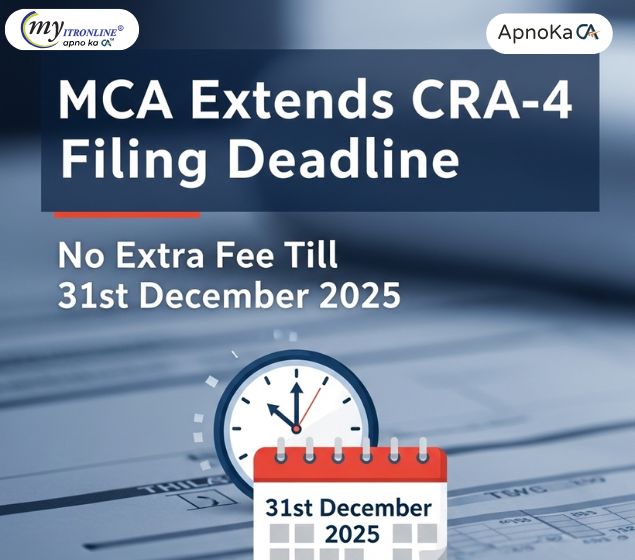
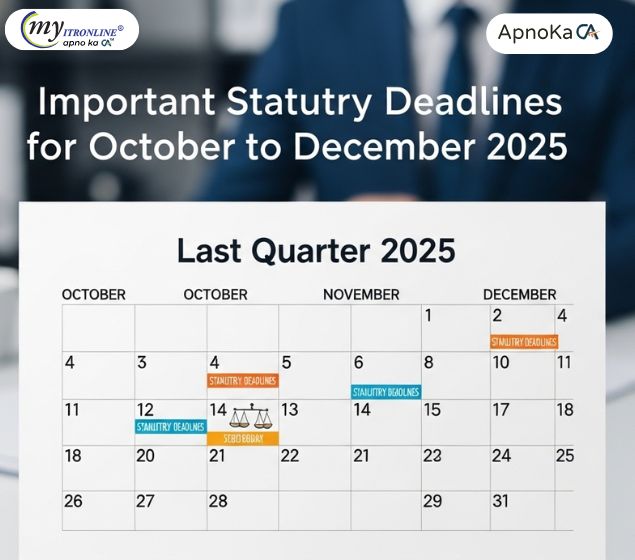
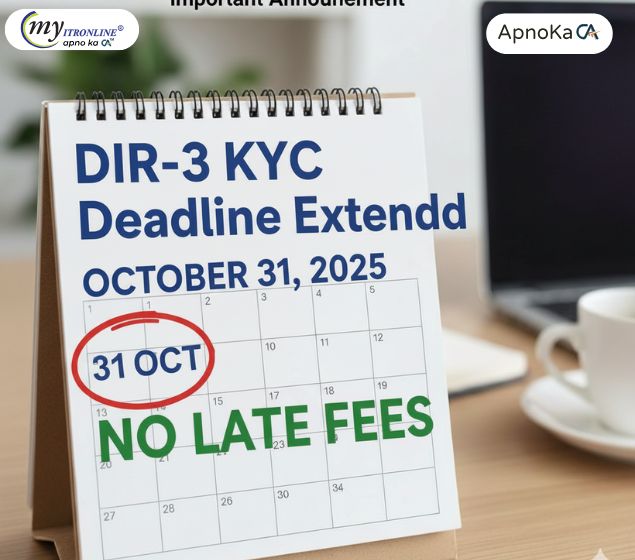
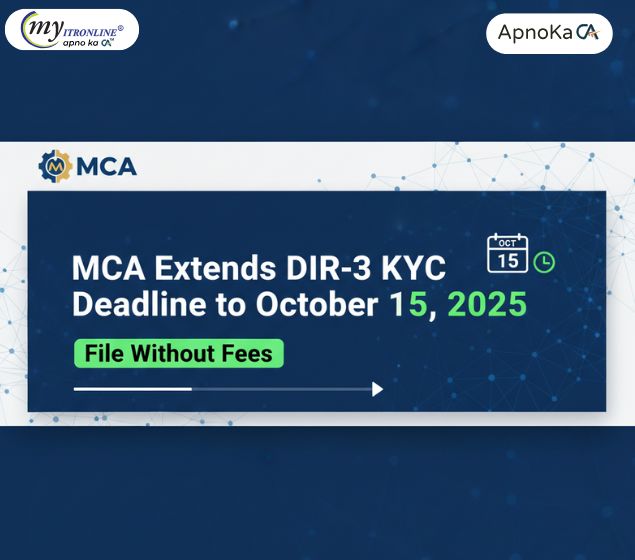
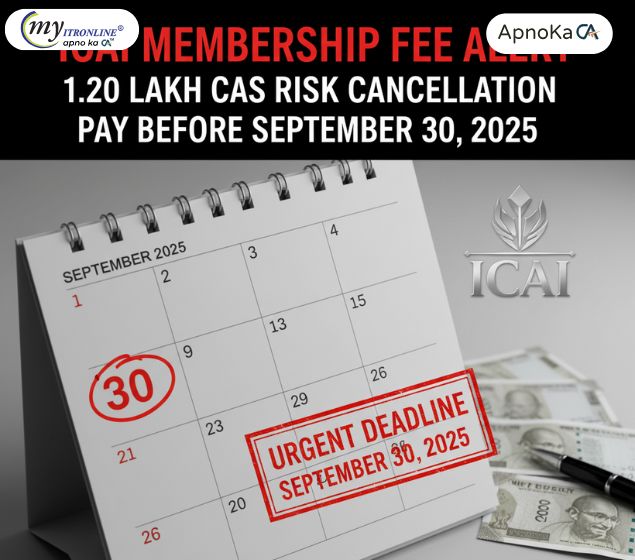

.jpg
)
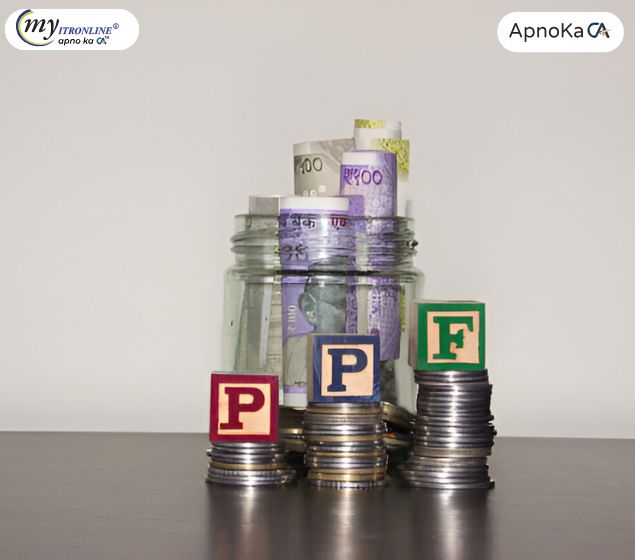
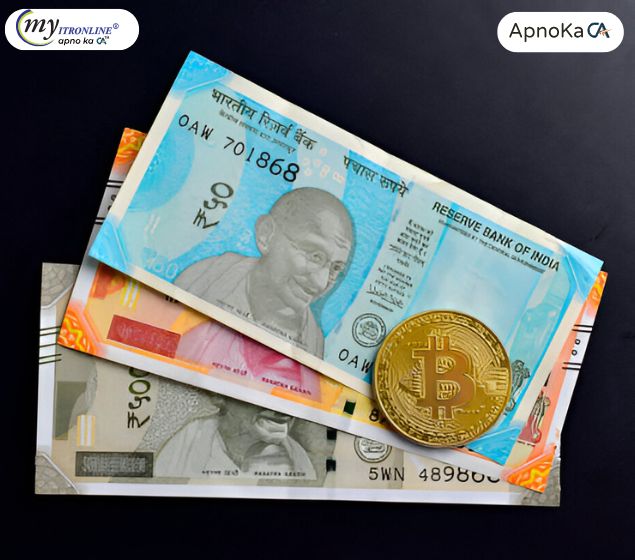
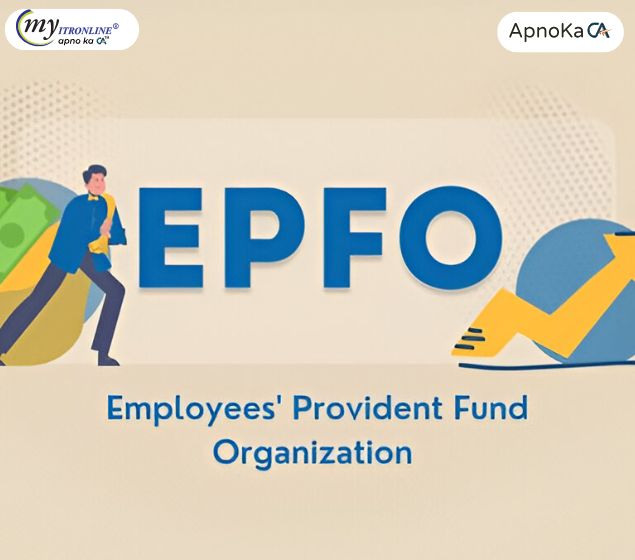
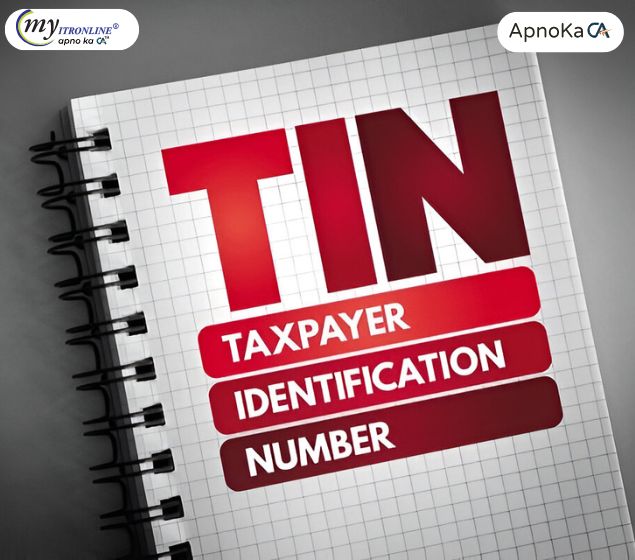
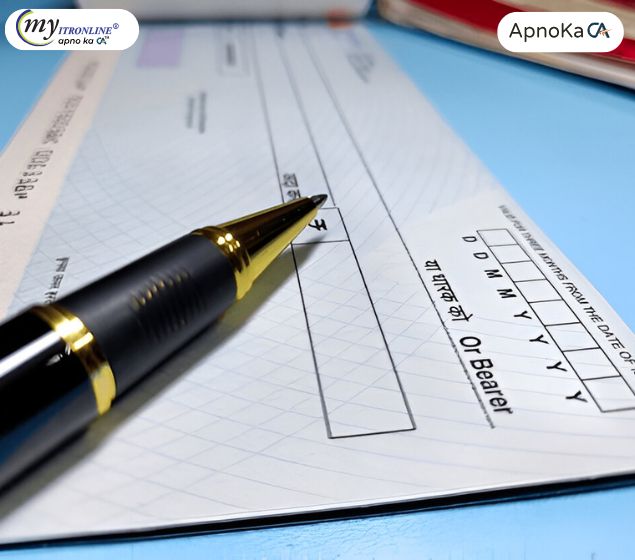
.jpg
)
.jpg
)